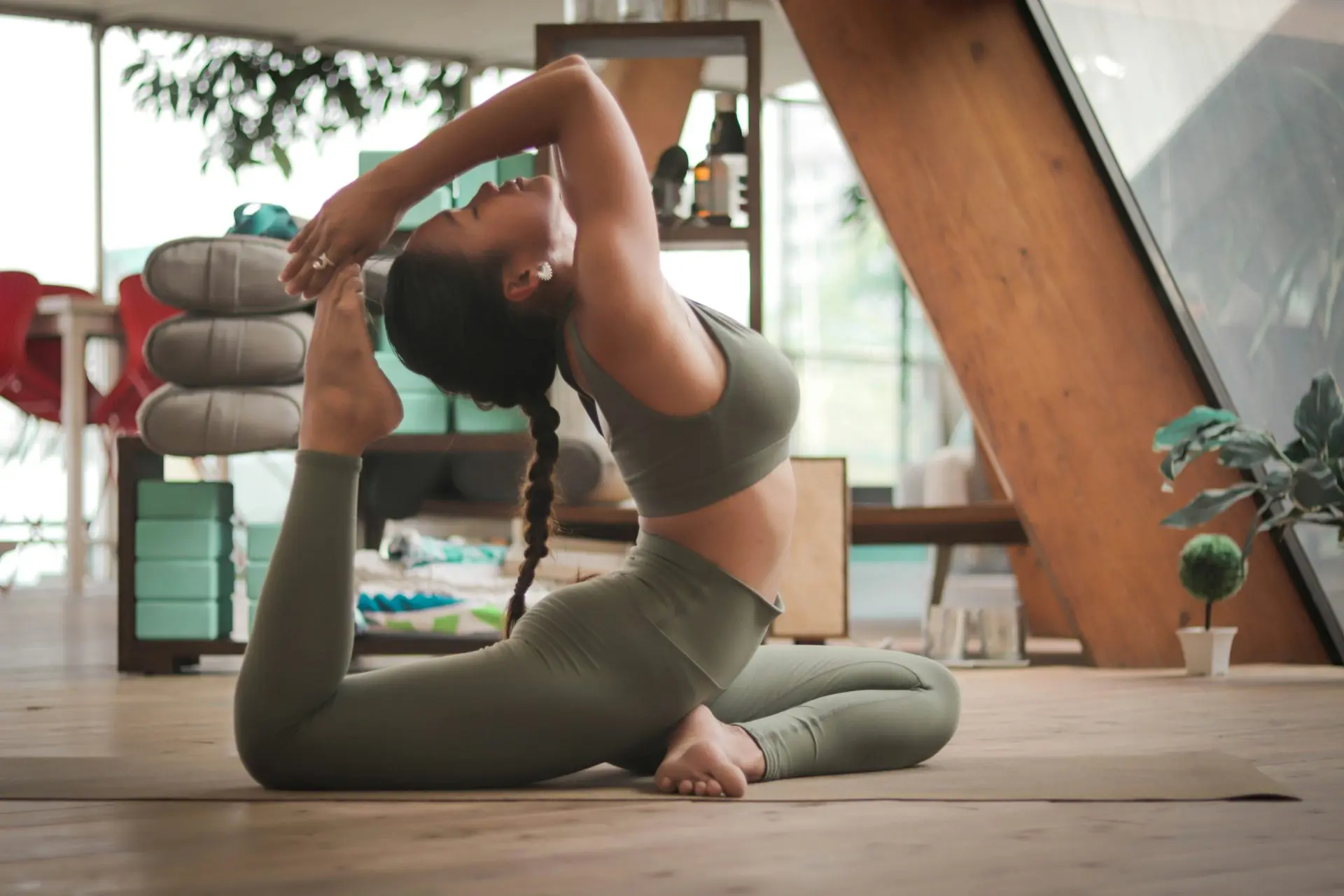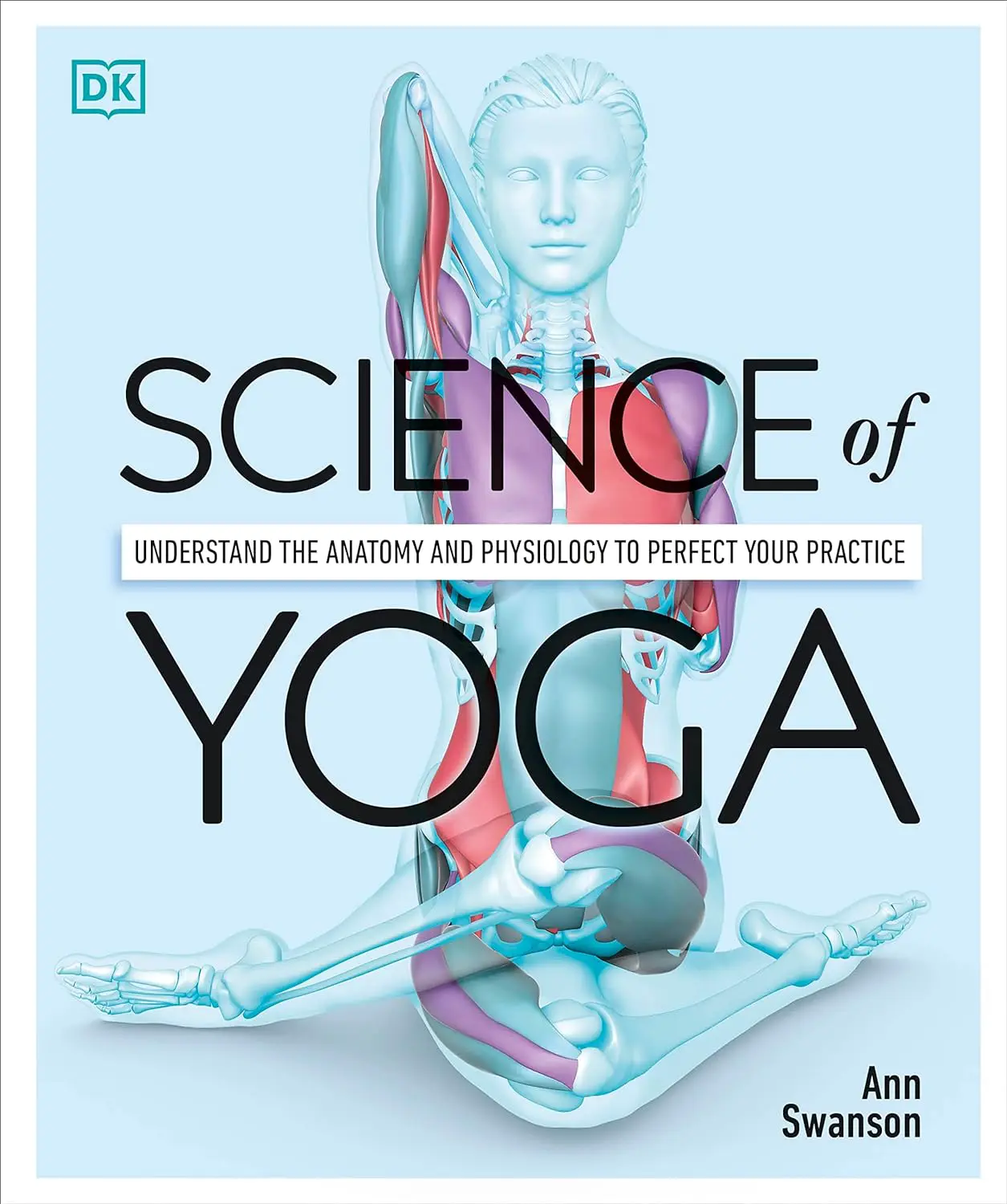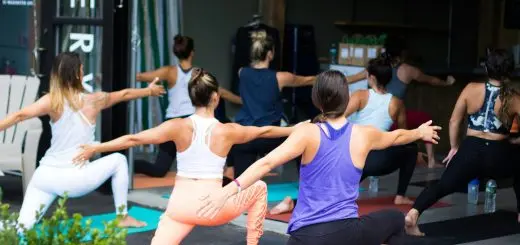What is Hatha Yoga? Understanding the Foundation of Yoga

Looking for more amazing products? Check out our online store and explore our collection here! Happy shopping!
Before diving in, please note: This post is for informational purposes only. If you’d like to know more about how we approach topics, feel free to check out our friendly Disclaimer Page.
Hey there, amazing readers! 
We’re committed to delivering quality posts, and your support (even just sticking around despite the ads) means everything to us. So, bear with us, and thanks for helping us keep the good vibes rolling. Now, on to the fun stuff!
TRANSLATE BUTTON AT THE END OF THE ARTICLE
A Quick Overview
Hatha Yoga, often hailed as the foundational practice of yoga, offers a gentle yet profound approach to well-being.
It’s not just about twisting your body into complex shapes or balancing on one leg; it’s a holistic system that embraces the body, mind, and spirit.
This article will take you on a journey through the essence of Hatha Yoga, shedding light on its historical roots, unique principles, and practical applications.
Whether you’re a newbie or someone looking to deepen your understanding, there’s something here for everyone.
Discovering Hatha Yoga: A Joyful Introduction
Hatha Yoga is like the welcoming mat of the yoga family.
It’s accessible to all, regardless of age or fitness level.
Imagine stretching, breathing, and finding your center in a calm and peaceful environment—sounds delightful, right?
At its core, Hatha translates to "sun" (Ha) and "moon" (Tha).
This beautiful duality represents the balance of opposing forces.
Just like day and night, Hatha Yoga strives to harmonize our inner energies.
The practice involves physical postures, breath control, and meditation, aiming to align the body and mind.
For many, Hatha Yoga is a way to unwind from the chaos of daily life.
It encourages us to slow down, breathe deeply, and reconnect with ourselves.
Think of it as a gentle nudge towards mindfulness.
When you step onto the mat, you enter a world where you can leave your worries at the door.
The beauty of Hatha Yoga lies in its simplicity.
You don’t need to be a contortionist or a spiritual guru.
Just a willingness to learn and grow.
And believe me, even the simplest poses can lead to surprising insights about our bodies and minds.
So, if you’ve ever wondered what Hatha Yoga can offer you, grab a mat and join me in exploring this delightful practice.
It might just change the way you see yourself and your world.
The Roots of Hatha Yoga: A Historical Perspective
The lineage of Hatha Yoga stretches back over a thousand years.
Its origins are deeply intertwined with ancient Indian philosophy and spiritual practices.
While its exact beginnings are hard to pinpoint, many scholars trace it to texts like the Hatha Yoga Pradipika, written in the 15th century by Swami Swatmarama.
In those early days, Hatha Yoga was seen as a preparatory practice—a way to prepare the body for meditation.
The goal was to achieve a state of physical and mental clarity.
Monks and sages utilized these techniques to enhance their spiritual journeys.
That’s right, Hatha Yoga was originally about connecting with the divine, not just about looking good in yoga pants.
As yoga spread westward in the 19th and 20th centuries, Hatha gained popularity for its physical benefits.
People began to recognize the impact of postures on health and well-being.
Today, we see Hatha Yoga as a bridge between the physical and the spiritual, a practice that encompasses strength, flexibility, and peace of mind.
The influence of teachers like T.
Krishnamacharya and B.K.S.
Iyengar brought Hatha into the limelight.
They meticulously crafted their teachings, focusing on alignment, breath, and the importance of adapting practices to individual needs.
Their dedication helped shape modern yoga, and their legacies continue to inspire millions.
Key Principles: What Makes Hatha Yoga Unique?
Hatha Yoga stands apart from other yoga styles due to its focus on synchronization of movement, breath, and awareness.
It emphasizes the following key principles:
Postures (Asanas): Hatha Yoga features a variety of poses that promote strength, flexibility, and balance.
These asanas serve as a means to connect the mind and body.
Breath Control (Pranayama): Breath is the life force.
Hatha Yoga teaches us to control our breath, enhancing our energy levels and calming our minds.
Mindfulness: More than just physical practice, Hatha Yoga encourages being present.
It cultivates awareness of thoughts, feelings, and sensations, leading to a deeper understanding of oneself.
Alignment: Proper alignment in poses is crucial.
It helps prevent injuries and allows practitioners to experience the full benefits of each posture.
Relaxation: Unlike some vigorous styles of yoga, Hatha invites relaxation and introspection.
It teaches us to find stillness amidst movement.
These principles work together to create a harmonious experience.
They encourage us to nurture our bodies while developing mental clarity and emotional balance.
Hatha Yoga vs. Other Yoga Styles: Know the Difference
With so many yoga styles out there, it’s easy to get overwhelmed.
What sets Hatha Yoga apart from others?
Here’s a quick comparison:
Hatha vs.
Vinyasa: Vinyasa is all about flow.
It links movements to breath in a dynamic sequence.
Hatha, on the other hand, is slower and focuses on holding poses longer.
Hatha vs.
Ashtanga: Ashtanga is a rigorous and structured practice, featuring a set sequence of poses.
Hatha is more flexible—teachers may adapt the sequence based on the class’s needs.
Hatha vs.
Yin: Yin Yoga targets the connective tissues and is often practiced in longer holds.
Hatha incorporates a mix of dynamic movements and static holds, making it more balanced.
Hatha vs.
Restorative: While both aim for relaxation, Restorative Yoga involves props and gentle poses to support the body fully.
Hatha is slightly more active but still maintains a soothing vibe.
Understanding these differences can help you choose the right style for your needs.
If you’re looking for a balanced approach that nurtures both body and mind, Hatha Yoga might just be your perfect match.
Essential Asanas: Poses to Begin Your Journey
When starting your Hatha Yoga journey, certain poses can serve as a solid foundation.
Here are some essential asanas to try:
Mountain Pose (Tadasana): This pose grounds you and helps with posture.
Stand tall, feel the earth beneath your feet, and breathe deeply.
Downward-Facing Dog (Adho Mukha Svanasana): A classic pose that stretches the entire body.
It’s great for building strength and finding relaxation.
Warrior I (Virabhadrasana I): This pose embodies strength and focus.
It opens the heart and builds confidence.
Child’s Pose (Balasana): A restful pose that allows for deep relaxation.
It’s a go-to for taking a breather during your practice.
Seated Forward Bend (Paschimottanasana): A gentle stretch for the back and hamstrings; it also encourages introspection.
Start by practicing these poses with intention.
Focus on your breath and allow your body to explore each movement.
Remember, yoga isn’t a competition; it’s a journey of self-discovery.
The Role of Breath: Pranayama in Hatha Yoga
Breath is the heart of Hatha Yoga.
Without it, our practice would lack depth and purpose.
Pranayama, or breath control, plays a crucial role in this style of yoga.
It’s all about harnessing our breath to enhance our mental and physical states.
In Hatha Yoga, we learn various pranayama techniques:
Ujjayi Breath: This ocean-sounding breath creates heat and focus.
It’s often used in asana practice to maintain concentration.
Nadi Shodhana (Alternate Nostril Breathing): This technique balances energy and calms the mind.
It’s great for reducing stress.
Kapalabhati (Skull-Shining Breath): A powerful technique that invigorates and energizes.
It involves short, forceful exhales.
By incorporating these breathing techniques, we can deepen our practice and cultivate a greater sense of calm.
Breathing becomes a tool for transformation, allowing us to connect more profoundly with ourselves.
Mind-Body Connection: The Essence of Hatha Yoga
Hatha Yoga is a beautiful dance between the mind and body.
Each pose invites us to listen and be present.
When we practice Hatha Yoga, we develop a keen awareness of our bodies.
We begin to notice how different postures affect our mental state.
The connection between body and mind is where the magic happens.
It teaches us to observe our thoughts and emotions without judgment.
This mindfulness can spill over into our daily lives, helping us respond to challenges with greater clarity.
Imagine feeling stressed at work.
Through Hatha Yoga, you learn to find your breath and center yourself, bringing a sense of calm to an otherwise chaotic moment.
You become more resilient, more in tune with your emotions, and more capable of navigating life’s ups and downs.
In essence, Hatha Yoga is about creating a nurturing environment for self-exploration.
It’s a gentle reminder that our bodies are wise, and our minds are capable of great peace.
Hatha Yoga for Beginners: Tips to Get Started
If you’re new to Hatha Yoga, I have some friendly advice to make your journey smoother:
Find a Suitable Class: Look for beginner-level classes in your area or online.
A good instructor will guide you through poses and help you understand the fundamentals.
Invest in a Good Mat: A quality yoga mat can make all the difference.
It provides grip and cushioning, making your practice more enjoyable.
Wear Comfortable Clothing: Opt for breathable and flexible attire.
You want to move freely without any distractions.
Listen to Your Body: It’s crucial to honor where you are.
If a pose feels too intense, skip it or modify it.
Yoga is about listening, not pushing.
Practice Regularly: Consistency is key.
Aim for short, frequent sessions rather than infrequent, lengthy ones.
Be Patient: Progress may not happen overnight.
Enjoy the journey and celebrate small victories along the way.
Stay Hydrated: Drink water before and after your practice.
Hydration aids recovery and keeps your energy levels up.
Explore Different Styles: While Hatha is a great start, don’t hesitate to try other styles to find what resonates with you.
Reflect and Journal: Consider keeping a yoga journal.
Write about your experiences, thoughts, and feelings after each session.
Have Fun!: Above all, enjoy the journey.
Hatha Yoga is about self-discovery and wellness.
Embrace every moment on your mat.
Benefits of Hatha Yoga: Body, Mind, and Spirit
Hatha Yoga is packed with benefits that touch every aspect of our being.
Here’s a rundown of what you might experience:
Improved Flexibility: Regular practice increases flexibility in muscles and joints.
Say goodbye to stiffness!
Enhanced Strength: Holding poses builds muscle strength, which aids in daily activities.
Stress Relief: The combination of movement and breath work calms the nervous system, reducing anxiety and stress.
Better Posture: Awareness from Hatha Yoga promotes proper alignment, which can alleviate back pain.
Increased Focus: Mindfulness cultivated through practice helps sharpen mental clarity and concentration.
Emotional Balance: Hatha Yoga encourages self-awareness, enabling us to process emotions more healthily.
Boosted Energy Levels: Engaging in Hatha Yoga can leave you feeling energized and revitalized.
Enhanced Respiratory Function: Pranayama techniques improve lung capacity and overall respiratory health.
Spiritual Connection: For many, Hatha Yoga deepens spirituality, fostering a sense of connection to the universe.
Overall Well-being: The holistic approach nurtures physical, mental, and emotional health, leading to a balanced life.
These benefits are not just theoretical; they manifest in everyday life.
Personally, I’ve found that Hatha Yoga helps me handle stress better, sleep more soundly, and connect with my inner self.
How to Create a Hatha Yoga Practice at Home
Practicing Hatha Yoga at home can be incredibly fulfilling.
Here’s how to build your personal practice:
Set Up a Dedicated Space: Find a quiet spot where you can roll out your mat and practice freely.
Gather Supplies: You don’t need much—just a mat, some comfortable clothes, and maybe a few props like blocks or straps.
Choose a Time: Pick a time that suits your schedule.
Consistency is key, but flexibility is also important.
Use Online Resources: Plenty of online classes and tutorials are available.
Follow along with experienced instructors to gain insights.
Create a Sequence: Start with a few basic poses and gradually add more as you feel comfortable.
Incorporate Breath Work: Don’t forget about pranayama.
Spend a few minutes focusing on your breath before and after your asanas.
Allow for Reflection: Consider taking a moment after your practice to journal about your experience.
What felt good?
What challenged you?
Stay Open-Minded: Explore different poses and techniques.
Your practice will evolve as you do.
Practice Mindfulness: Bring awareness to your movements and breath.
It’s all about being present.
Enjoy the Process: Remember, yoga is a lifelong journey.
Celebrate the small victories and enjoy the path.
Common Misconceptions: What Hatha Yoga Is Not
It’s easy to fall prey to misconceptions about Hatha Yoga.
Here are a few myths debunked:
It’s Only for Flexible People: Many believe you must be flexible to practice yoga.
That’s not true!
Yoga is for everyone, regardless of flexibility.
It’s Too Easy or Simple: Some think Hatha Yoga is just beginner-level.
While it can be gentle, it can also be a challenging and transformative practice.
It’s a Religion: Hatha Yoga is not a religion; it’s a practice that can complement any belief system.
It’s about your personal journey.
You Have to Be Fit to Start: Many assume they need to be fit before trying yoga.
Hatha welcomes all body types and fitness levels.
It’s Just About the Poses: While asanas are a component, Hatha Yoga encompasses breath work, meditation, and mindfulness, creating a rich experience.
By dispelling these myths, we can encourage more people to explore Hatha Yoga without fear or hesitation.
Embrace the Journey: Your Path in Hatha Yoga
As you embark on your Hatha Yoga journey, remember that it’s about more than just the poses.
It’s a path of self-discovery, growth, and connection.
Embrace each moment on the mat and allow yourself to evolve.
Don’t rush the process.
Like a flower blooming, your journey will unfold in its own time.
Celebrate the small victories, whether it’s mastering a pose or finding a moment of stillness.
Every step counts.
Stay curious and open to new experiences.
Explore different classes, styles, and teachers.
Each can offer valuable insights and perspectives.
Above all, be kind to yourself.
Yoga is about self-acceptance and love.
It invites us to honor our bodies and minds, wherever we are in our journey.
As I wrap up this exploration, I’m reminded of the joy Hatha Yoga has brought into my life.
I hope it does the same for you.
So, roll out that mat, take a deep breath, and embark on your unique journey in Hatha Yoga.
Conclusion
Hatha Yoga is a beautiful path to self-discovery and well-being.
It blends physical postures, breath control, and mindfulness, creating a holistic experience that nourishes the body, mind, and spirit.
Whether you’re a beginner or an experienced practitioner, Hatha Yoga welcomes you with open arms.
As you delve deeper into this practice, remember to listen to your body, embrace your journey, and enjoy every moment.
With patience and dedication, you’ll find the gifts that Hatha Yoga has to offer—improved health, emotional balance, and a deeper connection to yourself.
So, what are you waiting for?
Grab your mat and step into the wonderful world of Hatha Yoga.
Your journey awaits!

The Enlightenment Journey is a remarkable collection of writings authored by a distinguished group of experts in the fields of spirituality, new age, and esoteric knowledge.
This anthology features a diverse assembly of well-experienced authors who bring their profound insights and credible perspectives to the forefront.
Each contributor possesses a wealth of knowledge and wisdom, making them authorities in their respective domains.
Together, they offer readers a transformative journey into the realms of spiritual growth, self-discovery, and esoteric enlightenment.
The Enlightenment Journey is a testament to the collective expertise of these luminaries, providing readers with a rich tapestry of ideas and information to illuminate their spiritual path.
Our Diverse Expertise
While our primary focus is on spirituality and esotericism, we are equally passionate about exploring a wide range of other topics and niches 

To ensure we provide the most accurate and valuable insights, we collaborate with trusted experts in their respective domains 
Our blog originally focused on spirituality and metaphysics, but we’ve since expanded to cover a wide range of niches. Don’t worry—we continue to publish a lot of articles on spirituality! Frequently visit our blog to explore our diverse content and stay tuned for more insightful reads.
Hey there, amazing reader! 
Check out our store here and take a peek at some of our featured products below! Thanks for being awesome!











